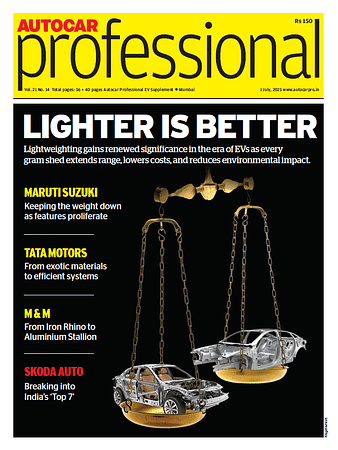Magna to begin production of next-gen front camera module for European carmaker
Magna’s Gen5 system is a scalable, one-box front camera module delivering long range perception and side detection; high-volume production to equip multiple platforms across regions and vehicle models.
At IAA Mobility 2023 last week, Magna announced the start of production of its innovative Gen5 front camera module system for a European OEM from late September 2023. The net-gen forward-facing camera system is manufactured at Magna facilities in Germany, Slovakia and China.
The high-volume business award will support various platforms across regions and vehicle models over the next few years. Magna leveraged its market-leading camera expertise and global manufacturing processes to develop a scalable, one-box front camera module which it will supply to the automaker.
The complete forward facing camera system features a wide field of view with opening angles of 120 degrees horizontally and 48 degrees vertically. This allows for both long-range perception of obstacles exceeding 160 metres in front of the vehicle, and detection of side objects, such as traffic lights, emergency vehicles and cut-in vehicles. The camera offers eight megapixels of resolution, a 36 frames per second frame rate and a full colour image. The microcontroller is scalable for sensor fusion with up to five radars.
"We are dedicated to providing cutting-edge solutions and innovations that prioritise safety for all who share the road," said Sharath Reddy, Senior Vice- President, Magna Electronics. "With our latest generation front camera module system, we are advancing driver assistance by offering essential features that keep drivers engaged and provide real-time road insights, equipping them with a comprehensive understanding of their surroundings."
The system offers features like:
- Trained Park Assist (TPA), a parking automation comfort feature that provides the driver with an option to park the vehicle automatically with a previously learned ‘park-in’ or ‘park-out’ trajectory.
- Environmental Condition Recognition (ECR) that classifies the current condition of road surfaces ahead with respect to wetness or snow coverage for piloted driving functions to control the vehicle.
- Monocular Scene Reconstruction (MSR) which detects the transition of drivable to non-drivable areas. For example, asphalt to grass transitions, construction site delimetres and many more.
- Hazard Detection (HZD), noticing static obstacles on the road upfront to avoid collisions.
ALSO READ:
LG Magna e-Powertrain's new plant in Hungary to cater to European EV market
Magna begins production of modular eDecoupling unit for BEVs
RELATED ARTICLES
Volkswagen Group sells 465,500 BEVs worldwide in first-half 2025, up 47%
With strong growth in Europe (+89%) and the USA (+24%), despite a sales decline in China (-34%), the VW Group’s global B...
Skoda begins sale of made-in-India CKD Kushaq in Vietnam
Before production started, pre-series Kushaq vehicles covered over 330,000 kilometres on a variety of Vietnamese roads a...
Six Japanese companies join forces to expand use of recycled materials in new vehicles
Denso, Toray Industries, Nomura Research Institute, Honda Motor, Matec Inc and Rever Corporation have set up the BlueReb...





 By Autocar Professional Bureau
By Autocar Professional Bureau
 11 Sep 2023
11 Sep 2023
 6367 Views
6367 Views









